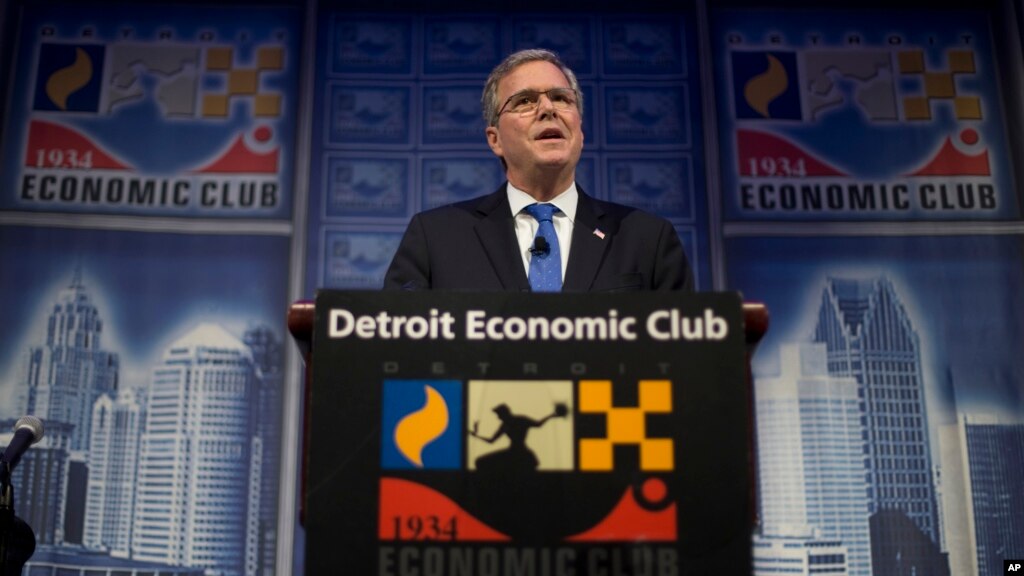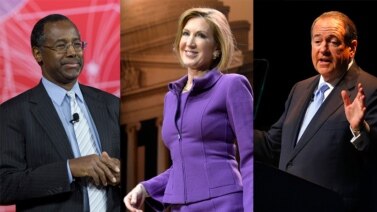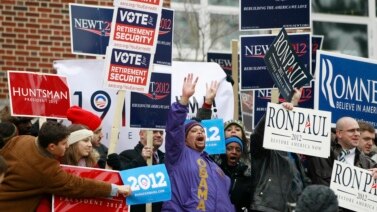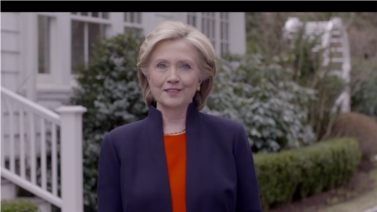
Money, lots of it, is what it takes to win the presidency of the United States.
When Richard Nixon won re-election in 1972, the Center for Responsive Politics has estimated that the presidential election cost just $300 million in today’s dollars.
In the 2008 presidential campaign, candidates raised and spent more than $1 billion, a new record. Only four years later, the cost of the campaign more than doubled to $2.6 billion as Barack Obama won re-election over Mitt Romney.
Observers say the eventual nominees for the 2016 presidential elections will double that amount again. The candidates could spend up to $2 billion each to get to the White House. And the total costs could reach $10 billion for the presidential and congressional races. That amount is more than five times the “gross domestic product” or GDP of the Asian country of Bhutan. GDP is the value of all the products and services produced by a country, usually measured in a year.
Citizens United court decision
The amount of money raised and spent has exploded since 2010. That is when the U.S. Supreme Court changed America’s election laws. The court’s decision, known as “Citizens United,” took away most limits on spending and fundraising for elections by outside political groups. Citizens United argued that raising and spending money is free speech, a first amendment right. They won.
Dave Levinthal is the senior political reporter at the Center for Public Integrity. He says “Citizens United” changed the way elections work in the U.S. by allowing money to flow into the political system that was illegal before. He says both sides feel strongly about the subject.
“On one hand you’ve got free speech, and the first amendment to the constitution, on the other side you say well, this is really just about the validity of our elections and the ability for candidates to run without feeling like their election is getting bought by the highest bidder.”
There are still limits on how much people, companies and political action committees (PAC) can contribute directly to candidates and political parties. For example, an individual can only give a candidate a total of $2,700 each election.
But there is no limit on the amount of money they can give to a “super PAC.” Super PACs are large political action committees. Both Democrats and Republicans have created them to raise large amount of money to assist their candidates.
The election rule bans campaigns and super PACs from working together. They cannot discuss common strategies or plans. They cannot share important information like opinion surveys or polls. Candidates can attend the super PAC events, but they are not allowed to ask people for unlimited donations.
Mr. Levinthal says the looser campaign rules now allow candidates to “double dip.” They can run their own campaigns, and they can have a super PAC, run by friends, or even family members.
“So it means that super PACs, since they can and raise and spend unlimited amounts of money, in a way are shadow campaigns, or parallel campaigns for the candidate’s actual campaign operation that he or she is running. ”
The limits on how much contact a candidate can have with a super PAC only starts once he or she officially declares they are running for office. Some politicians delay their announcements so they can continue to work closely with their super PAC.
Campaign financing for 2016
The race for money started early in the 2016 campaign.
In January of this year, probable Republican candidate Jeb Bush and his supporters launched the “Right to Rise PAC.” The PAC says it supports candidates “with a positive, conservative vision of reform and renewal.” But the only probable candidate on the PAC website is Jeb Bush himself.
At the same time, a super PAC with the same name “Right to Rise Super PAC” was launched and raised $100,000 within minutes. Politico reported that the Right to Rise super PAC will likely raise $100 million before Jeb Bush is even an official candidate.

Mr. Levinthal says Democrats are catching up to Republicans in the big money race.
“They’re competing with Republicans in a major way to use these committees, these vehicles that they can use to raise and spend a whole heck of a lot of money, and they’re doing that to their great advantage.”
At a campaign stop in Iowa on May 18, Democratic candidate Hillary Clinton stated her position on the “Citizens United” court decision. She said, "I will do everything I can do to appoint Supreme Court justices who will protect the right to vote and not the right of billionaires to buy elections."
For now, Clinton is attending gatherings of “Priorities USA Action” and meeting possible donors through this super PAC. One such meeting was at the home of billionaire Tom Steyer, who spent $74 million of his own money in the 2014 election. The New York Times reported that Priorities USA Action hopes to raise $200 to $300 million. That is a similar amount to what top Republican organizations are raising.
Why do they need all this money? Money is the fuel that gets a candidate elected. To get to the White House, a candidate must be able to run a 50 state campaign. Money is needed for operating costs that go with those campaign office buildings and people and salaries and advertising. Candidates need dollars to get their messages out on social media, television and radio stations, and into peoples’ mailboxes.
Whether the amount raised reaches the $10 billion dollar estimate, or not, no doubt it will break all records. 2016 will be the most expensive election yet.
I’m Anne Ball.
Anne Ball reported and wrote this story. Hai Do was the editor.
Words in This Story
validity – n. something that is legally or officially binding or acceptable.
bidder – n. someone who offers to pay for something (who makes a bid)
looser – adj. not as tightly held or controlled
salaries – n. the amount someone is paid to do a job
expensive – adj. something that costs a lot to buy


